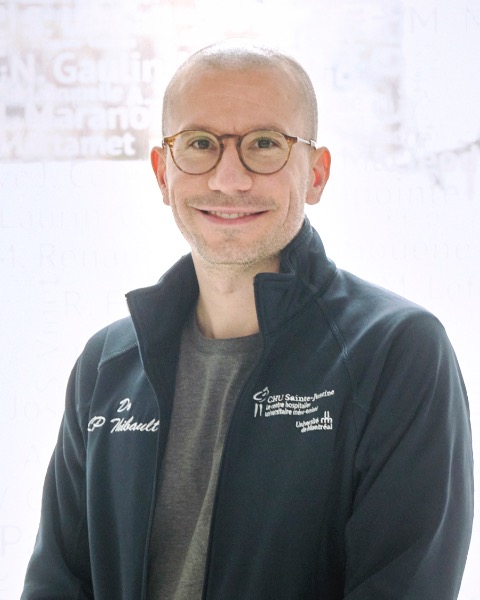Back
Background: COVID-19 pandemic led to major and rapid organizational healthcare changes, including adjustments from ambulatory services to telemedicine and decreased access to home services. Children with medical complexity (CMC) require many medical services and are generally prone to infectious complications. Few is known about the impact of the pandemic on families of CMC. Understanding how these families experienced the pandemic is essential to tailor the healthcare services to better answer their needs.
Objective: We explored parental experience of CMC during the COVID-19 pandemic and how complex care program’s (CCP) answered their new needs.
Design/Methods: This qualitative study was conducted between July 2020 and January 2021 in a tertiary care pediatric hospital center. Semi-structured interviews were done with parents of CMC, admitted in the CCP at least 1 year prior to the beginning of the pandemic. The interview guide was co-constructed by physicians and nurses from the CCP. Interviews were transcribed verbatim and analyzed using NVivo. Data were organized into codes and categories. Thematic content analysis was performed by grouping categories and highlighting emerging themes.
Results: Eleven families (14 parents, including 3 couples) were interviewed. The first wave of the pandemic seemed to have caused important uncertainty and anxiety amongst parents of CMC. Almost all parents reported cancelling numerous appointments in order to avoid coming to the hospital at all costs. Some parents, worrying specifically about the fragility of their child, stopped working and stayed home to reduce transmission risks. Fear of facing shortages in medications, nutritional supplements and medical equipment for home care was frequently expressed. They did not express worries about the lifting of restrictions. Support provided by the CCP’s staff was greatly appreciated, namely active problem-solving via phone calls, videoconferences, emails and photos, leading to less hospital visits and less need to seek emergency care. Some reported that more general communications from the CCP (e.g. weekly information email) would have helped to interpret the overwhelming amount of information from the media. Parents expressed a strong desire to maintain telemedicine services after the pandemic.
Conclusion(s): The COVID-19 pandemic brought additional worries to parents of CMC enrolled in CCPs including fear of shortages and virus transmission. Direct communication with the CCP and remote problem-solving were greatly appreciated by families. Improvement to follow-up include finding ways to help interpretating data from the media.
Children with Chronic Conditions
Children with Chronic Conditions 3
84 - Parental perspectives about the role of complex care programs: managing the impact of the COVID-19 pandemic on children with medical complexities
Sunday, April 30, 2023
3:30 PM – 6:00 PM ET
Poster Number: 84
Publication Number: 84.305
Publication Number: 84.305
Louis-Philippe Thibault, CHU Sainte-Justine, Universite de Montreal, Montreal, PQ, Canada; Niina Kleiber, CHU Sainte-Justine, Montreal, PQ, Canada

Louis-Philippe Thibault, MD, MMSc, BBA (he/him/his)
Assistant Clinical Professor & Clinician-scientist
CHU Sainte-Justine, Universite de Montreal
Montreal, Quebec, Canada
Presenting Author(s)
Background: COVID-19 pandemic led to major and rapid organizational healthcare changes, including adjustments from ambulatory services to telemedicine and decreased access to home services. Children with medical complexity (CMC) require many medical services and are generally prone to infectious complications. Few is known about the impact of the pandemic on families of CMC. Understanding how these families experienced the pandemic is essential to tailor the healthcare services to better answer their needs.
Objective: We explored parental experience of CMC during the COVID-19 pandemic and how complex care program’s (CCP) answered their new needs.
Design/Methods: This qualitative study was conducted between July 2020 and January 2021 in a tertiary care pediatric hospital center. Semi-structured interviews were done with parents of CMC, admitted in the CCP at least 1 year prior to the beginning of the pandemic. The interview guide was co-constructed by physicians and nurses from the CCP. Interviews were transcribed verbatim and analyzed using NVivo. Data were organized into codes and categories. Thematic content analysis was performed by grouping categories and highlighting emerging themes.
Results: Eleven families (14 parents, including 3 couples) were interviewed. The first wave of the pandemic seemed to have caused important uncertainty and anxiety amongst parents of CMC. Almost all parents reported cancelling numerous appointments in order to avoid coming to the hospital at all costs. Some parents, worrying specifically about the fragility of their child, stopped working and stayed home to reduce transmission risks. Fear of facing shortages in medications, nutritional supplements and medical equipment for home care was frequently expressed. They did not express worries about the lifting of restrictions. Support provided by the CCP’s staff was greatly appreciated, namely active problem-solving via phone calls, videoconferences, emails and photos, leading to less hospital visits and less need to seek emergency care. Some reported that more general communications from the CCP (e.g. weekly information email) would have helped to interpret the overwhelming amount of information from the media. Parents expressed a strong desire to maintain telemedicine services after the pandemic.
Conclusion(s): The COVID-19 pandemic brought additional worries to parents of CMC enrolled in CCPs including fear of shortages and virus transmission. Direct communication with the CCP and remote problem-solving were greatly appreciated by families. Improvement to follow-up include finding ways to help interpretating data from the media.
